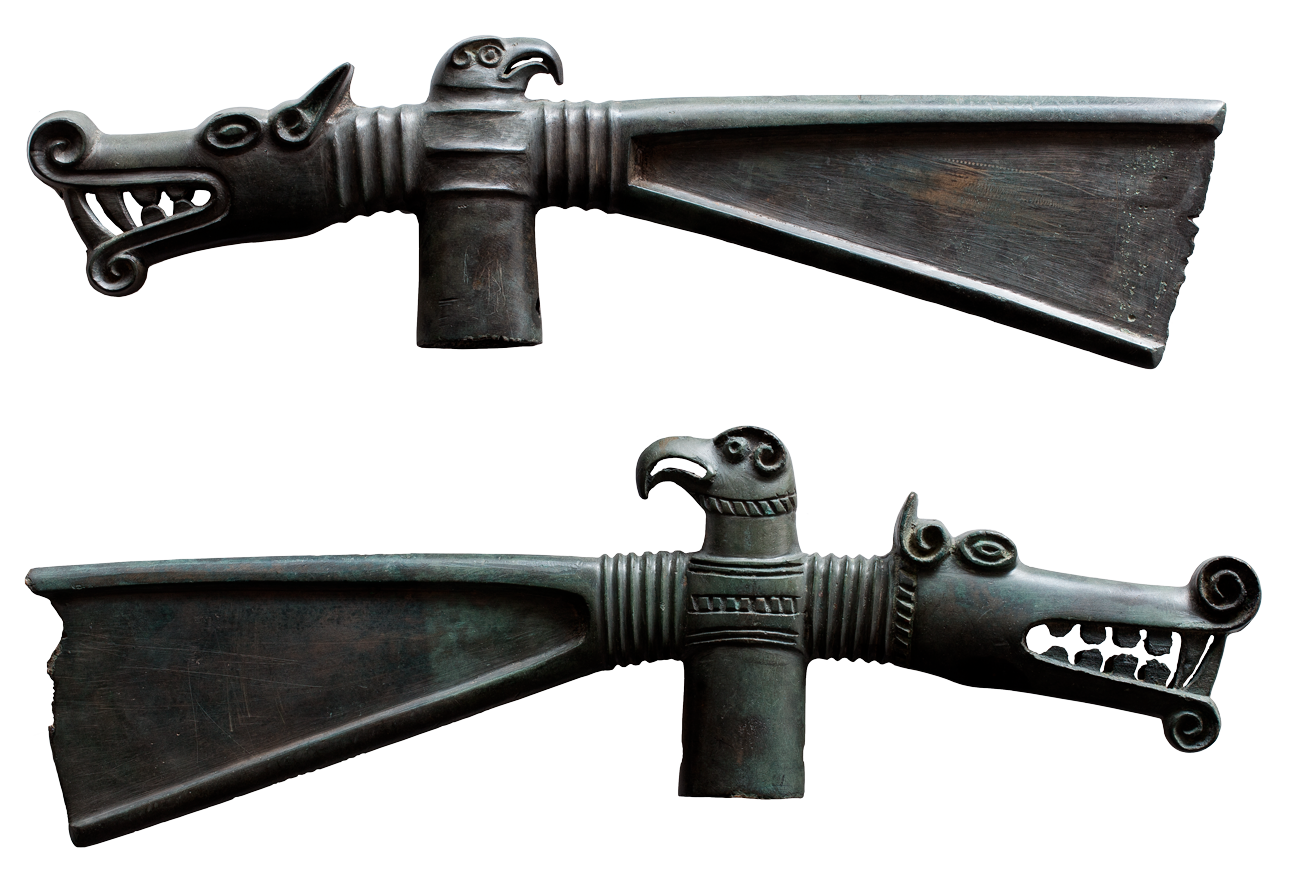Ceremonial poleaxe

Poleaxes are perfect examples of high-technological and progressive for their time bronze casting. They were produced of high-quality bronze by craftsmen of Anan’ino culture-historical communion that was formed on wide territories of the Middle Volga, the Kama river basin and the North-East of Europe.
Poleaxes are similar not only in their measurements, but also in being made of high artistic merit. Vent-pegs are toped with extensive and significant images of birds’ of prey (or griffons) heads, heads of axes are decorated as heads of preying animals with teeth bared (probably wolfs). Images of birds of prey, fantastic griffons and reptiles in beliefs of ancient Anan’ino tribes were connected to chthonic creatures, that in early times were representing vivific powers of earth, and the netherworld where everything comes back after its life cycle.
Exhibits’ purpose of use – ceremonial poleaxes at first were not supposed to be used as a weapon. High level of standardizing, put in the images deep sacral meaning allow to consider them important objects of high rank – symbols of power and strength, rods that belonged to the social elite of the society, probably, to the military aristocracy and heads of tribes.
Uniqueness. On the huge territory of Anan’ino region only 10 of such findings are known, and most of them are connected neither to settlement nor to burial grounds. Supposedly, ceremonial poleaxes as a variant of sacrifice gifts were intentionally hidden in the ground in barely noticeable and hard-to-reach places.
